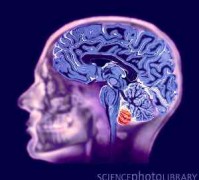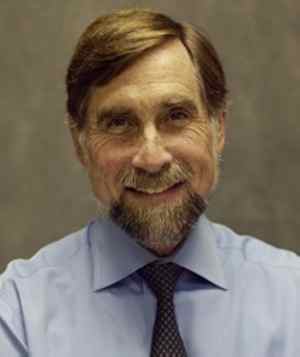
Frozen addicts; drug addicts developed Parkinson’s disease

Dr. J. William Langston, a brilliant researcher and giant of neuroscience. (Photo: JPD)
Drug addicts developed Parkinson’s disease from bad drugs
Science does not fully know what causes people to contract Parkinson’s disease but, interestingly, it is known with absolute certainty that a group of drug addicts developed symptoms of advanced Parkinson’s disease from injecting “bad” drugs.
Parkinson’s disease is a progressive, neurodegenerative disease for which there is no cure. Parkinson’s is associated with a lack of dopamine, which results in abnormal nerve functioning and a loss in the ability to control body movements.
The “frozen addicts”, as they later became known, were six people who had injected synthetic heroin and developed advanced Parkinson’s disease.
The synthetic heroin was supposed to contain the compound known as MPPP that produces a heroin-like high.
Instead, it is believed that the street chemist botched the process and actually created MPTP, which is a deadly substance.
Frozen addicts start turning up in Emergency rooms
George Carrillo, was brought to the emergency room at Santa Clara Valley Medical Center in San Jose, California in July 1982.
He was unable to speak and could walk slowly if people assisted him but he was slumped over.
Something was very wrong with the 41-year-old man.
Juanita Lopez was 31 when she was brought to the same hospital suffering from rigidness and palsy.
Recalling what happened to her, Lopez said,
I was completely bed ridden; my mom and sisters had to take care of me. They had to feed me, get me out of bed, take me to the bathroom, even give me a bath.
Lopez was Carillo’s girlfriend.
David Silvey and his brother Bill were in their 20’s and they become invalids overnight and turned up at Watsonville Community Hospital, some 50 miles away.
At Stanford Medical Center, Connie Sainz, 25, was hospitalized with similar symptoms.
Her boyfriend Toby Govea was also frozen.
Other then being frozen, they shared one commonality.
All had used synthetic heroin.
Dr. Langston from Santa Clara Medical Center made the connection to the synthetic herion and issued a public safety announcement.
Since all of the patients were experiencing symptoms of advanced Parkinson’s disease, he decided to treat the patients with the drug Levodopa (L-dopa), which, even today, remains one of the primary medicines used to treat Parkinson’s.
Miraculously, the treatment worked.
Recalling how Carillo improved, Dr. Langston said,
When I gave him L-dopa the reaction was amazing. It was like melting a block of ice,’ they were able to walk and talk and could function, as long as they remained on L-Dopa.
Without L-dopa, though, the frozen addicts would freeze up again.
Just like victims of Parkinson’s disease.
Unfortunately, L-dopa is not a miracle cure and too much of it or taking it for too long can cause dyskinesia, which is an increase in jerking and other involuntary movements as well as many other problems.
The frozen addicts suffered from a disease that was both disabling and permanent.
Any treatment given only provided temporary relief.
According to Dr, Langston,
The cure is almost worse that the disease. All of our patients with time developed one or more these side effects. And pretty soon with a number of them, what we call the therapeutic window, not only got smaller and smaller, but it closed. Either they were severely off and frozen and miserable or when they turned on, yes they could move but they these miserable side effects, these twisting turning movements, terrifying hallucinations. Life in other words was meaningless.
A promising experimental treatment, a fetal tissue implant, was available in Sweden and Dr. Langston wanted to have some or all of the frozen addicts accepted to participate in the experimental treatment.
Three of the six frozen addicts, brothers David and Bill, as well as Toby, were eliminated from consideration because they were incarcerated.
That left George, Juanita and Connie.
Connie was in the worst shape. Because of the terrible side effects of L-dopa, she had been off of all medication for three years and was a prisoner of her body.
Sadly, the first and only time she experimented with heroin, she injected the synthetic type and became frozen.
In 1988, the Swedish doctors made their decision.
George Carillo and Juanita Lopez were selected.
Fetal tissue would be implanted into their brains.
After the tissue implant, it took a long time for results to be realized but, according to Dr. Langston, it was a success.
Even while off of their medication, they could walk, ride a bike and even had their arm swing when they walked.
The Swedish doctors then agreed to operate on Connie Sainz.
Her results were not as good.
She developed graft-induced dyskinesias.
Toby Govea, who had not been selected to go Sweden, was in and out jail.
When he was given L-dopa his symptoms virtually vanished but he suffered severe side effects.
In 2003, while in prison, he underwent an experimental procedure called deep brain stimulation and his symptoms improved dramatically.
Five of the 6 frozen addicts have since died.
As of this writing, it appears that Connie Sainz is still alive but without much of a quality of life.
Before the case of the frozen addicts became known, there was the case of Barry Kidston.
Kidston was a chemistry graduate student who essentially became a frozen addict in 1977 after purposefully injecting himself with synthesized MPPP with MPTP as a major impurity.
He developed Parkinson’s, was successfully treated with L-dopa and died 18 months later of a cocaine overdose.
Their plight has helped further research for Parkinson’s.
Related articles






 Follow
Follow

